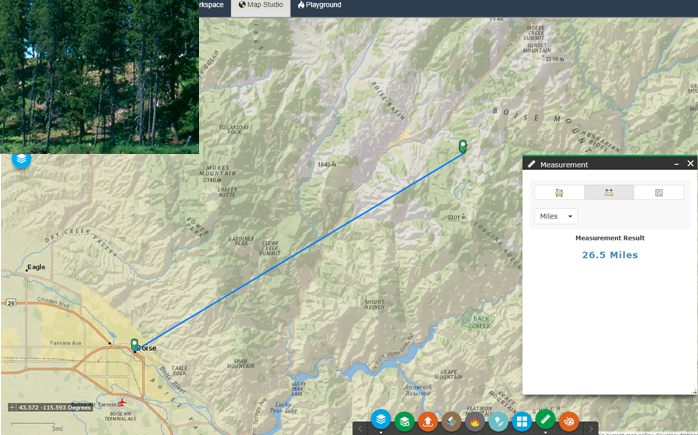Introduction
Management Scenario
You are a Fuels Technician on the Idaho City Ranger District, Boise National Forest, about 30 miles northeast of Boise, Idaho. In this scenario you will use IFTDSS to plan a hazardous fuels reduction project.
Through observation and based on Forest Plan direction, you see a need for some sort of fuels reduction treatment in the mixed conifer stands in Granite Creek drainage, approximately 4 miles east of Idaho City. The area hasn’t been treated in decades and the understory and surface fuels could contribute to uncharacteristically intense fire behavior. This would not only pose a hazard to the community of Idaho City and adjacent private land, but also cause undue mortality in this fire-adapted low elevation Ponderosa pine ecosystem that thrives on frequent but low severity fires.
Your objectives are to:
- Reduce surface fuel loading and the overall horizontal and vertical fuelbed continuity to reduce the fire hazard to adjacent private land and the community of Idaho City
- Return low intensity fire to fire adapted vegetation communities.
- Locate areas where our actions will be most effective
- Evaluate what type of treatment will help achieve these objectives
- Demonstrate the need for treatment, both quantitatively and spatially, to members of your district interdisciplinary (ID) team.
You'll use IFTDSS to plan a treatment around these objectives.

In the following sections this tutorial will cover:
- Previewing and Creating a Landscape Using Map Studio
- Summarize and Assess the Landscape
- Creating Areas of Interest
- Reviewing the Automatic 97th Percentile Landscape Fire Behavior (Auto97th) Report
- Developing Treatment Alternatives
- Comparing and Adding Treatment Alternatives
- Comparing Added Treatments and Concluding